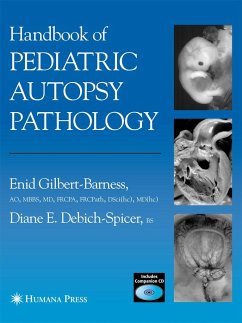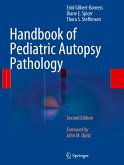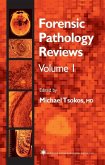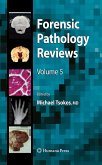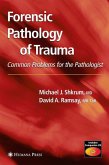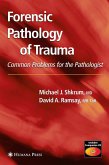A comprehensive reference guide to the successful performance of pediatric autopsies and to the optimal recognition and interpretation of their pathologic findings. The authors cover such major developmental disorders as hydrops, chromosomal defects, and congenital abnormalities, metabolic disorders, and review the major organ systems. Additional chapters address sudden infant death, cytogenetics, the medical and forensic autopsy, special procedures, cultures and infection control, and biological hazards at the autopsy. Numerous standard reference tables, copious illustrations and drawings, and an appendix at the end of each chapter provide a wealth of practical information and bibliographic citations. Pathologists have long recognized that the pediatric autopsy requires great care in technique and dissection to ensure that easily overlooked malformations are recognized and accurate diagnoses are made. Working in the tradition of the master pediatric pathologists, the highly experienced practitioners Enid Gilbert-Barness, MD, and Diane E. Debich-Spicer have created in the Handbook of Pediatric Autopsy Pathology a comprehensive reference guide to the successful performance of pediatric autopsies and the optimal recognition and interpretation of their pathologic findings. The authors cover such major developmental disorders as hydrops, chromosomal defects, congenital abnormalities, and metabolic disorders. The reviews of the organ systems encompass the cardiovascular, respiratory, gastrointestinal, renal, central nervous, and skeletal systems, plus the male and female genitourinary systems, the eye and adnexa, and the thymus, spleen, lymph nodes, and immunodeficiency. Additional chapters address sudden infant death, cytogenetics, the medical and forensic autopsy, special procedures, cultures and infection control, and biological hazards at the autopsy. Numerous standard reference tables, copious illustrations and drawings, and an appendix at the end of eachchapter provide a wealth of practical information and bibliographic citations. A value-added compact disk provides color versions of over 400 selected illustrations found in the book.
Cutting-edge and detailed, the Handbook of Pediatric Autopsy Pathology offers the prosector unequaled guidance to performing a pediatric autopsy, making an accurate diagnosis, and-where malformations are involved-explaining the implications of possible recurrences in future pregnancies.
Cutting-edge and detailed, the Handbook of Pediatric Autopsy Pathology offers the prosector unequaled guidance to performing a pediatric autopsy, making an accurate diagnosis, and-where malformations are involved-explaining the implications of possible recurrences in future pregnancies.
From the reviews:
"A very welcome, reasonably priced addition to the shelf of any pathologist who conducts paediatric autopsies... " -Bahid
"...an asset to any pathologists' assistant's library." - American Academy of Physician Assistants
"This book fills a much needed gap for the pediatric pathologist and for the general anatomical pathologist faced with a fetal or infant autopsy. ... These descriptions are accompanied by numerous photographs and diagrams. The extensive set of proformas, lists, and tables are of very real use to even the most experienced of pediatric pathologists. ... this is a very good book and an essential addition to the pathology library." (Lynette Moore, Forensic Science, Medicine, and Pathology, Vol. 2 (1), 2006)
"It was a great pleasure to review this book written by Dr Gilbert-Barness, well known as a distinguished paediatric pathologist, ably assisted by her co-worker Debich Spicer. ... There are five parts to the book ... . Techniques are well illustrated with black and white, easy to follow photographs. ... Overall this was well written and well illustrated. ... It is a book which I will be pleased to have on my shelf and I would recommend it as a useful aid to teaching." (Dr M-J Evans, American College of Physicians News, Autumn, 2005)
"A very welcome, reasonably priced addition to the shelf of any pathologist who conducts paediatric autopsies... " -Bahid
"...an asset to any pathologists' assistant's library." - American Academy of Physician Assistants
"This book fills a much needed gap for the pediatric pathologist and for the general anatomical pathologist faced with a fetal or infant autopsy. ... These descriptions are accompanied by numerous photographs and diagrams. The extensive set of proformas, lists, and tables are of very real use to even the most experienced of pediatric pathologists. ... this is a very good book and an essential addition to the pathology library." (Lynette Moore, Forensic Science, Medicine, and Pathology, Vol. 2 (1), 2006)
"It was a great pleasure to review this book written by Dr Gilbert-Barness, well known as a distinguished paediatric pathologist, ably assisted by her co-worker Debich Spicer. ... There are five parts to the book ... . Techniques are well illustrated with black and white, easy to follow photographs. ... Overall this was well written and well illustrated. ... It is a book which I will be pleased to have on my shelf and I would recommend it as a useful aid to teaching." (Dr M-J Evans, American College of Physicians News, Autumn, 2005)

